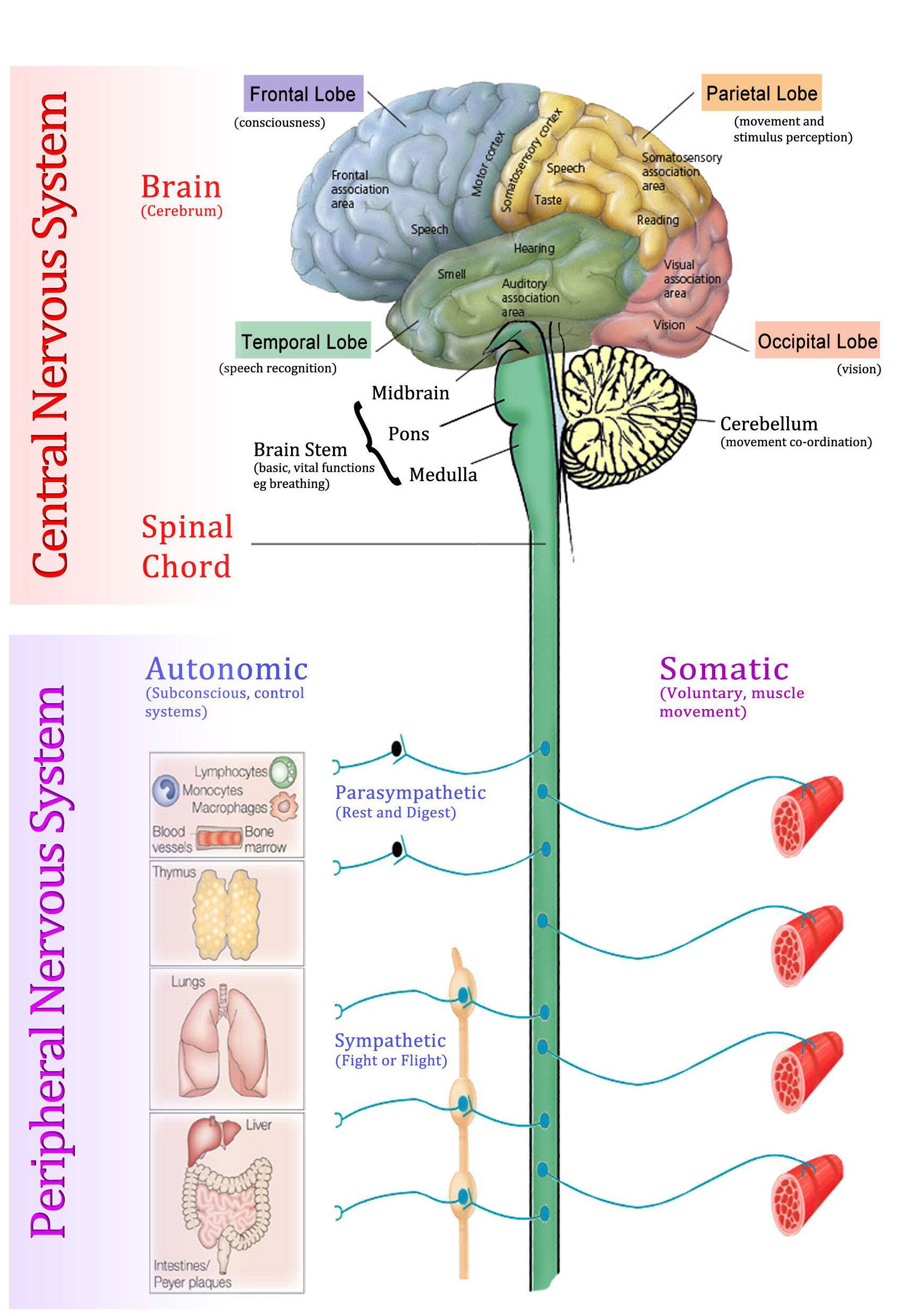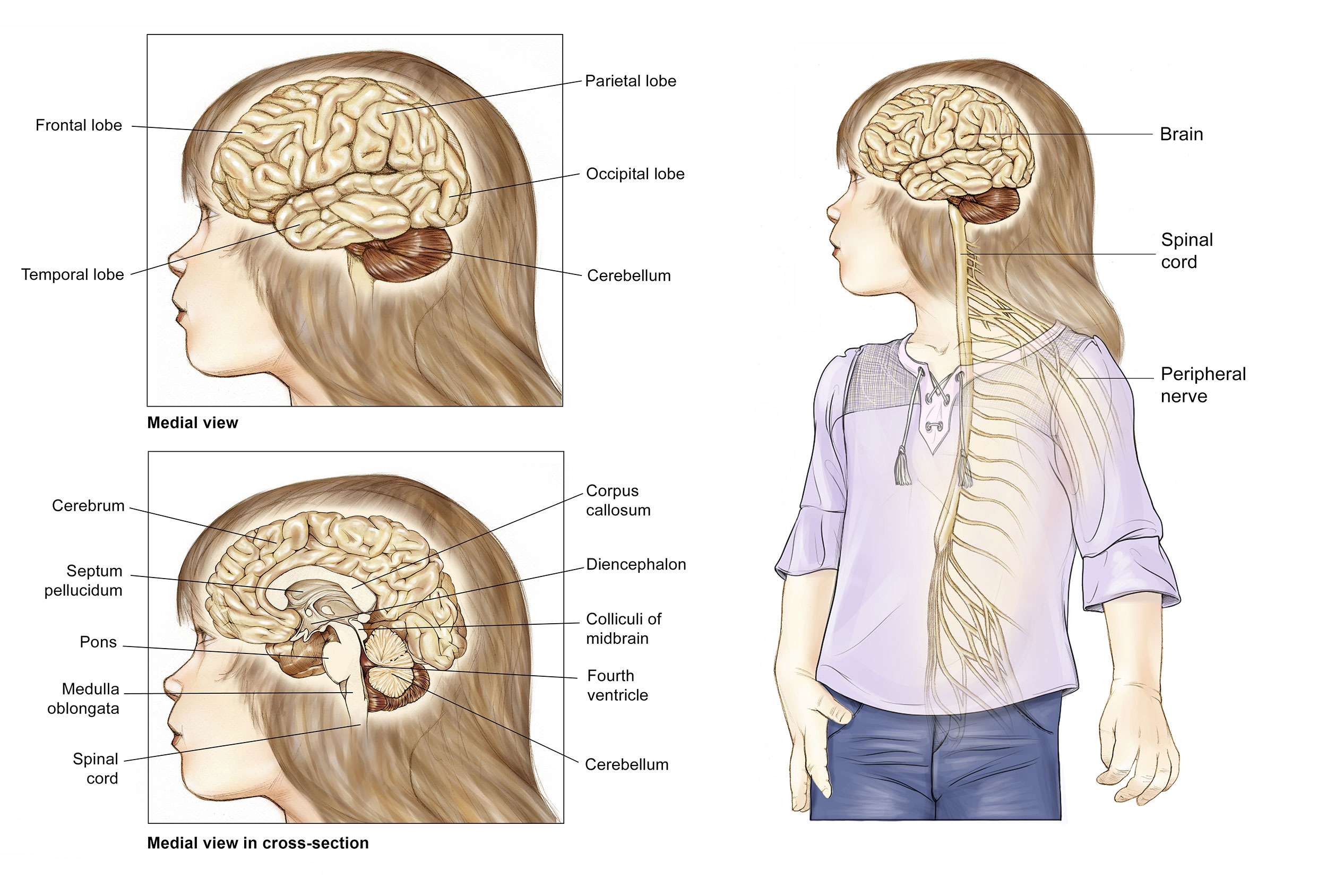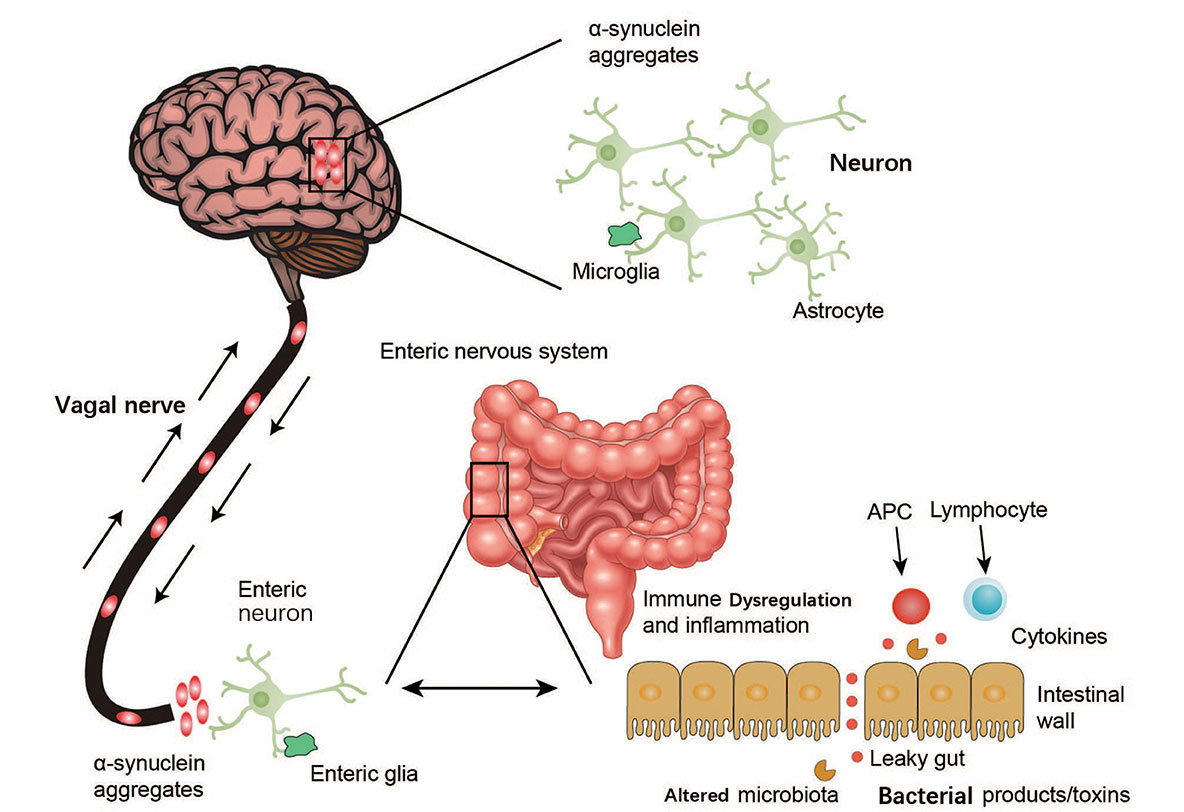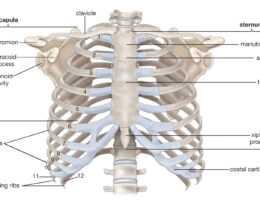The central nervous system (CNS) is the part of the nervous system that includes the brain and spinal cord. Here is a description of the CNS diagram:
- Brainstem: This is the lower part of the brain that connects the brain to the spinal cord. It is responsible for controlling many automatic functions, such as breathing and heart rate.
- Spinal cord: This is a long, thin, tubular bundle of nervous tissue that extends from the brainstem down to the lower back. It serves as a pathway for transmitting information between the brain and the rest of the body.
- Cerebellum: This is the part of the brain that is responsible for coordinating voluntary movements and maintaining balance and posture.
- Cerebrum: This is the largest part of the brain and is responsible for many functions, including consciousness, memory, and thought.
- Frontal lobe: This is the front part of the cerebrum and is responsible for many functions, including motor control, decision-making, and personality.
- Parietal lobe: This is the middle part of the cerebrum and is responsible for processing sensory information, such as touch, temperature, and pressure.
- Temporal lobe: This is the lower part of the cerebrum and is responsible for processing auditory information and for memory and emotion.
- Occipital lobe: This is the back part of the cerebrum and is responsible for processing visual information.
- Ventricles: These are fluid-filled spaces within the brain that are responsible for producing and circulating cerebrospinal fluid.
- Meninges: These are three protective layers of tissue that surround the brain and spinal cord.
- Corpus callosum: This is a bundle of nerve fibers that connects the two hemispheres of the brain and allows them to communicate with each other.
- Thalamus: This is a part of the brain that is responsible for relaying sensory information to the appropriate part of the cortex.
- Hypothalamus: This is a part of the brain that is responsible for regulating many bodily functions, such as temperature, hunger, and thirst.
- Pituitary gland: This is a small gland located at the base of the brain that is responsible for producing and releasing hormones that regulate many bodily functions.
- Pineal gland: This is a small gland located in the brain that is responsible for producing the hormone melatonin, which helps regulate sleep and wake cycles.






